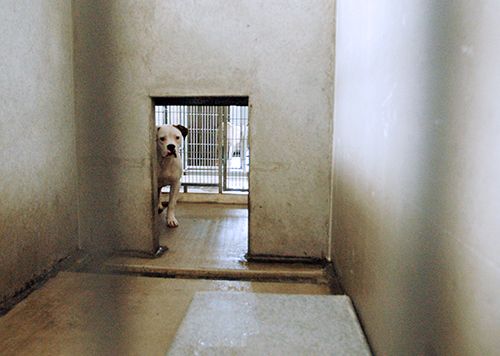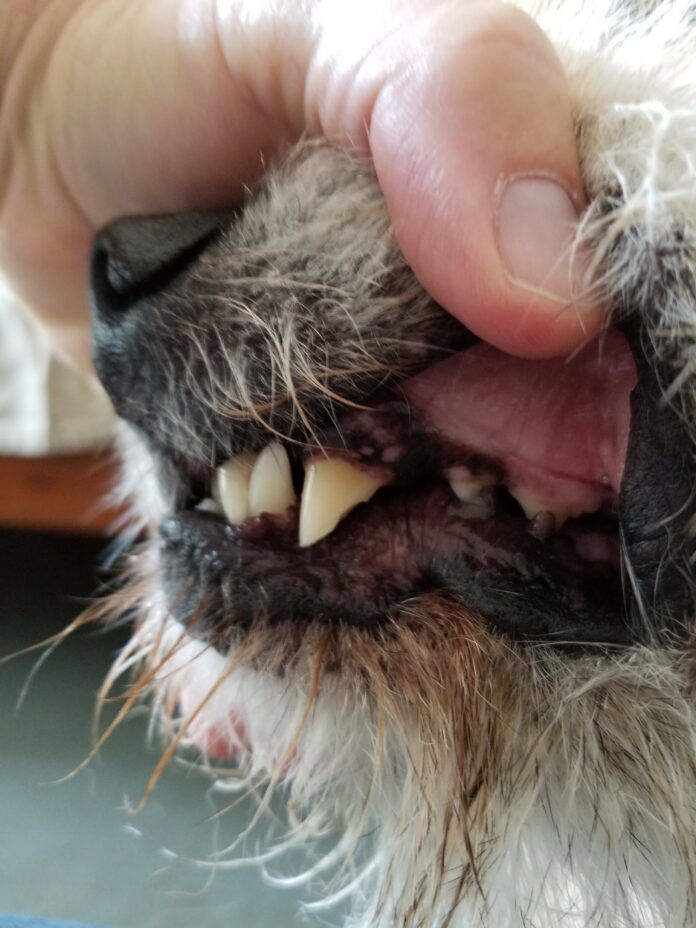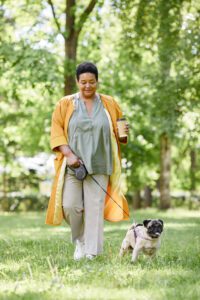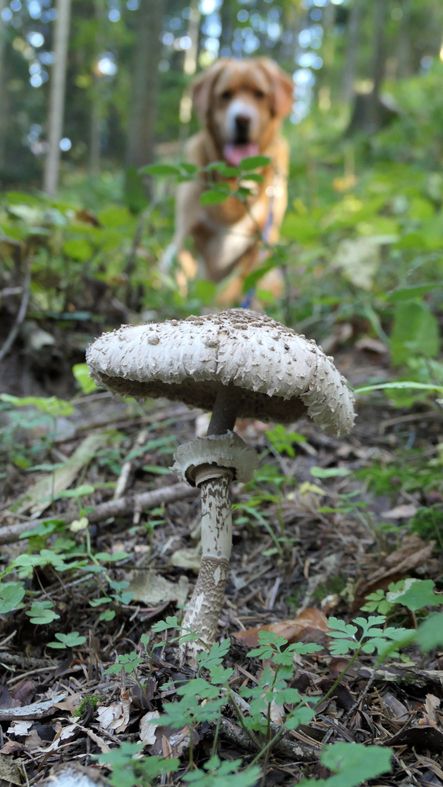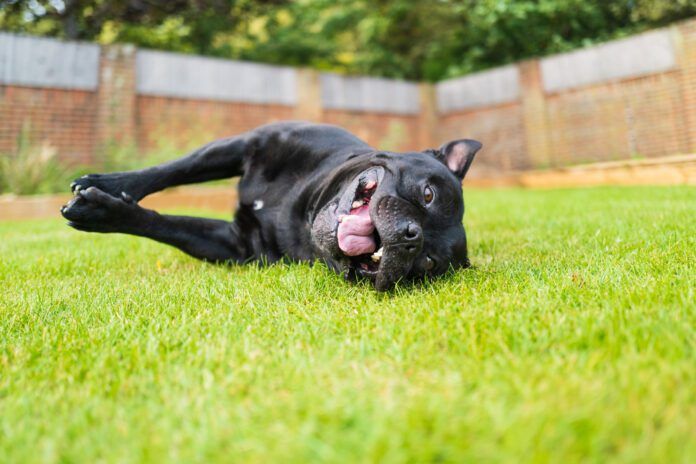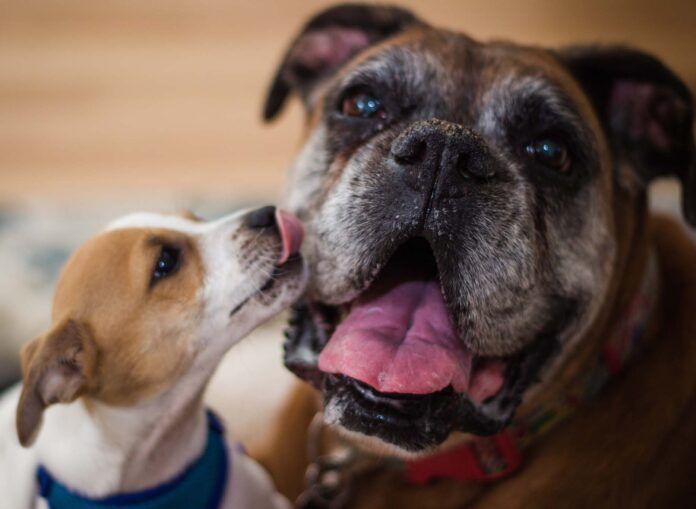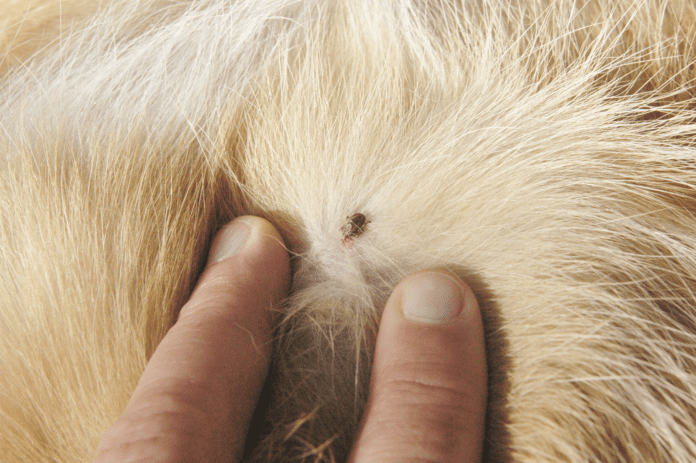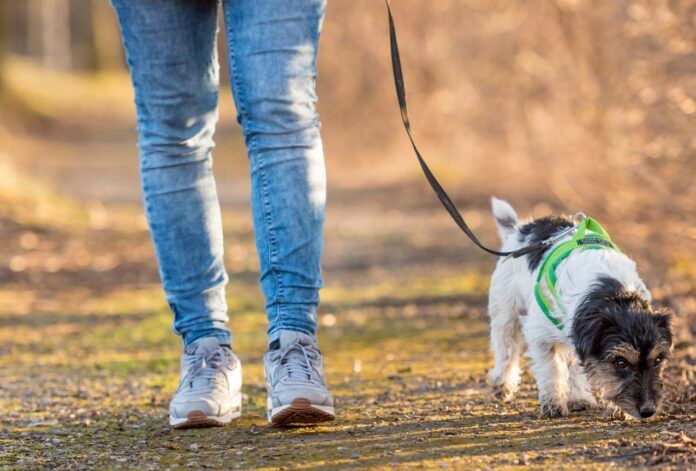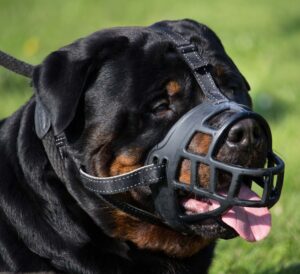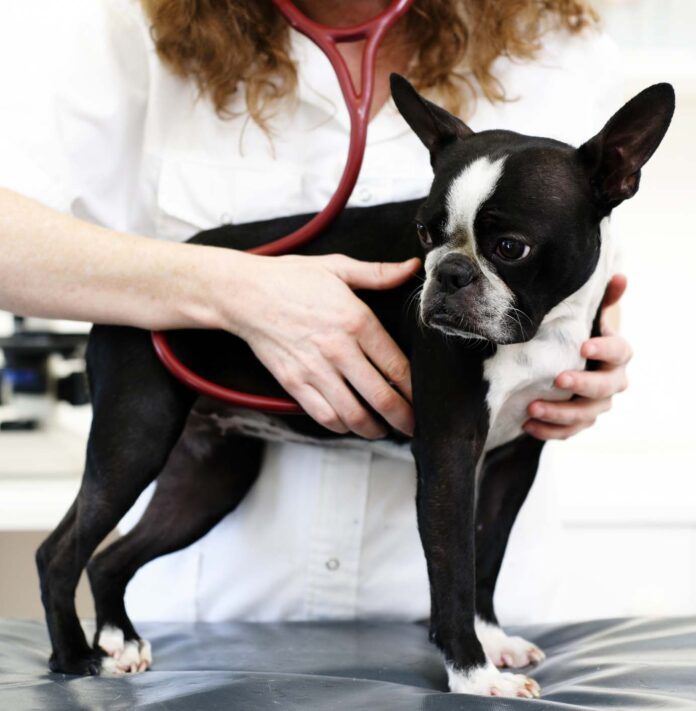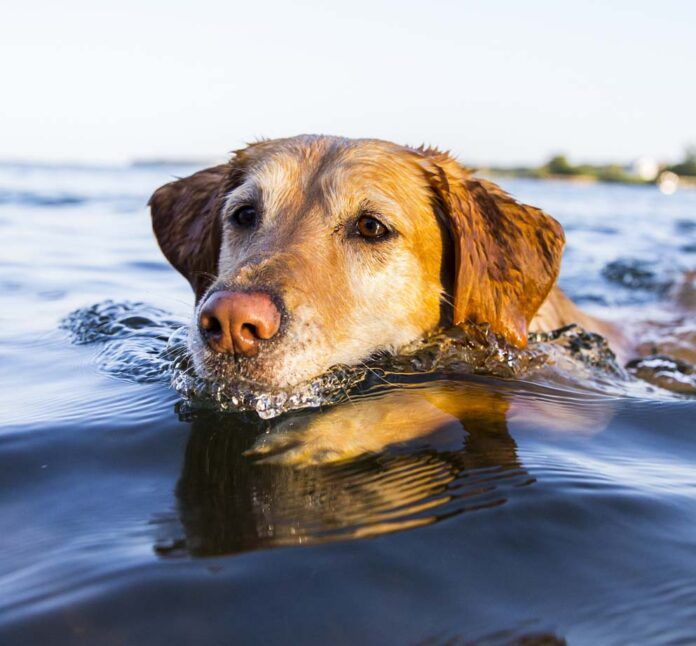Disclaimer: If you purchase items through links on our site we may earn a commission.
Traditionally, your dog is sent home after surgery wearing an Elizabethan collar, which is a stiff plastic tall cone that goes around the dog’s neck. Sometimes called a “dog surgery collar or e-collar,” this e-cone attaches to the dog’s collar and prevents him from licking the surgical site and removing stitches or infecting the wound. But, you may prefer to use an alternative for the e-collar.
These hard plastic dog surgery collars are not be best for your dog’s happiness. According to a 2020 study from the Sydney School of Veterinary Medicine, published in Animals, most alternatives are preferable to the Elizabethan collar. The researchers found over 77% of the participants reported a poorer quality of life while the animal wore the collar.
Some dogs bang into walls, furniture, and everyone in the house. They have trouble figuring out how to eat or drink. A few dogs will panic. Other dogs get depressed. And a few just freeze in place. It’s not a happy situation.
Luckily, there are commercial alternatives for these uncomfortable dog surgery cones and a few nifty homemade dog cone alternatives that may better suit your dog.
Homemade E-Collars
You can devise homemade/DIY versions of the Elizabethan collar. A rolled towel duct-taped to hold its shape like a donut collar may work for some dogs. Many dogs find it more comfortable than the plastic cone.
You can also thread pool noodles on a collar as a DIY cone alternative if you’re willing to do the work. You will need the correct size for your dog and be sure he can’t reach around it, but this can be an inexpensive alternative to a store-bought donut.
Some people take cardboard and create a cone using duct tape. The drawback is that it can be difficult to put on and to remove and you need to choose cardboard that the dog can’t bend, rip through, or lick enough that it weakens. The cardboard still limits vision, however, and is as unwieldy as the e-collar.
If you like the commercial neck wrap/brace option below, you may be able to fashion one out of cardboard, but be sure to pad the edges with cloth or foam to prevent rubs. With this design, your dog can’t tear or lick the cardboard, but he might be able to bend it.
Commercial E-Collar Alternatives
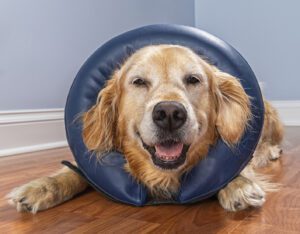
Not surprisingly, most dogs seem to prefer alternatives that don’t interfere with vision. Donut collars, like the Kong Cloud Collar, are popular with people and dogs alike, as they are like a bulky regular collar that snaps into place around the dog’s neck.
A taller, thinner option is a neck wrap/brace like the Bite-Not that stops the dog from reaching around and chewing on himself. He can still see without obstruction, eat, drink, and be comfortable. Be sure to get the proper fit.
Softer versions of the traditional dog Elizabethan collar, like the Comfy Cone, are more comfortable than plastic but still stand up and keep the dog from reaching around it. However, dogs can’t see through the Comfy Cone, and this can be a drawback.
For dogs that don’t need a major deterrent, a more flexible, softer version of the e-collar, like the ElizaSoft might work. It gives the dog more neck movement, but it’s wide enough that he can’t reach around it. It may be too wide for some dogs, however, causing them to step on it.
If you have a basket muzzle, like the Baskerville muzzle, you can use that. This muzzle will stop the dog from chewing at his stitches but still allows him to breathe freely, pant, eat treats, and drink water. Be sure to acclimate your dog to wear the muzzle before his surgery, however.
The Goal Matters
All recommendations depend upon getting the right size for your dog. Whatever you use, it must prevent your dog from turning his head so he can reach the incision. It must be safe—so he can’t injure himself trying to remove it or get caught on something when walking around.
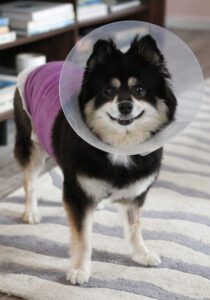
Expect trial and error, knowing that if you don’t figure out an alternative collar ahead of when you need it, you will have to use the one the veterinary clinic sent. If you get the alternative collar before you take the dog in, you can ask a veterinary staff member to help you ensure it is properly fitted to your dog.
If your dog is going to be recovering in it for more than a few days, you’ll need more than one recovery device/collar/suit, so you can wash and dry one while he wears the other.
Remember, you cannot leave the dog unattended or just “keep an eye on him” after surgery. For more depth on commercial options, see our article here.
A note about sprays and ointments that claim to deter licking wounds are available: First, they don’t stop all dogs; second, get your veterinarian’s OK before you use anything on a fresh incision.
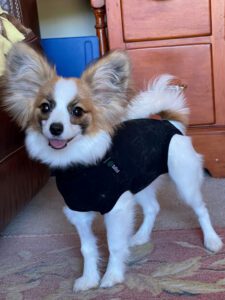 A popular alternative to cones is a post-op surgical/recovery suit. The suit covers the incision and prevents your dog from licking or chewing the incision. Many companies make these suits, and they’re washable and reusable. The best dog onesies have snaps in the areas of the penis or vulva and the anus so you don’t have to take the suit off when the dog needs to go outside. We compared suits in our dog recovery suits review.
A popular alternative to cones is a post-op surgical/recovery suit. The suit covers the incision and prevents your dog from licking or chewing the incision. Many companies make these suits, and they’re washable and reusable. The best dog onesies have snaps in the areas of the penis or vulva and the anus so you don’t have to take the suit off when the dog needs to go outside. We compared suits in our dog recovery suits review.
For little dogs, a baby/toddler onesie can work as a surgical suit. Take some measurements of your dog before you go to the store, especially if baby clothes aren’t your thing. For bigger dogs, you may be able to adapt a kid’s or adult T-shirt or long sleeve shirt for an inexpensive version.



